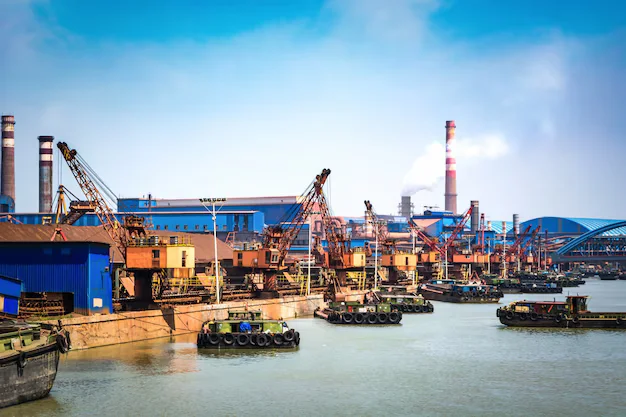Physical Address
304 North Cardinal St.
Dorchester Center, MA 02124
Physical Address
304 North Cardinal St.
Dorchester Center, MA 02124

Few inventions have revolutionized the world economy quite like cargo ships. These massive vessels are the lifeblood of international trade, enabling the seamless movement of goods across distant continents. From the containers stacked high on ultra-large ships to the liquid petroleum flowing through specialized tankers, cargo ships play a critical role in connecting producers and consumers worldwide. In this comprehensive guide, we delve into the fascinating world of cargo ships, exploring their types, key features, operational logistics, environmental impact, and the innovative future shaping this dynamic industry.
Container ships are specifically designed to carry standardized cargo containers, known as ISO containers. These ships are the giants of the maritime world, boasting large capacities to transport goods efficiently across global routes. Their features include streamlined loading and unloading systems, usually with container cranes or automated stacking cranes, allowing for rapid turnaround at ports.
Bulk carriers transport unpackaged commodities such as coal, grains, ores, and cement. They are characterized by open holds equipped with large hatches that facilitate the loading and unloading of bulk cargo.
Tankers are specialized cargo ships built to carry liquid cargo such as crude oil, chemicals, and liquefied natural gas (LNG). They feature multiple tanks with safety systems and are equipped with sophisticated pumping systems for loading and unloading.
Designed to carry wheeled cargo like cars, trucks, and trailers, Ro-Ro ships feature ramps that allow vehicles to roll on and off the vessel easily. Their quick turnaround times at ports make them ideal for automotive and heavy equipment transportation.
These versatile vessels carry a wide variety of cargo types, often including items that are less standardized. They are used for project cargo, heavy machinery, and other goods unsuitable for containerization or bulk handling.
The hull of a cargo ship is engineered for stability, capacity, and fuel efficiency. Different hull shapes optimize performance depending on intended routes and cargo types.
Modern cargo ships utilize advanced machinery like cranes, conveyor systems, and automated stacking facilities to streamline loading and unloading processes. Innovations in automation are improving safety and efficiency, reducing port turnaround times.
Propulsion in cargo ships is primarily driven by diesel engines, although hybrid and alternative propulsion systems are becoming more prevalent amid environmental concerns.
Safety remains paramount on cargo ships. They are equipped with lifeboats, fire suppression systems, security protocols, and compliance measures such as the International Ship and Port Facility Security (ISPS) Code.
Major seaports serve as vital gateways for cargo ships to load and unload goods. Notable hubs include Shanghai, Singapore, Rotterdam, and Los Angeles, each with extensive infrastructure to support large vessels and efficient turnaround times.
Global shipping routes form the backbone of cargo ships‘ operations, linking continents across vast maritime chokepoints such as the Strait of Malacca, the Suez Canal, and the Panama Canal. These routes are strategically important for reducing transit times and costs.
Efficient voyage planning, container tracking systems, and real-time data analytics enable smooth cargo operations. Companies utilize sophisticated logistics platforms to optimize schedules, reduce costs, and improve transparency.
Cargo ships contribute significantly to global carbon emissions, with their emissions comparable to some entire countries. The IMO’s MARPOL agreements aim to reduce sulfur oxides (SOx), nitrogen oxides (NOx), and greenhouse gases.
Advances in green maritime technology include the adoption of alternative fuels like LNG and biofuels, energy-efficient hull designs, and renewable energy sources such as solar panels and wind-assisted propulsion.
The cargo shipping industry is moving towards automation and digitization. Autonomous ships, predictive maintenance, and AI-driven route optimization are on the horizon, promising increased safety and efficiency.
The global economy directly influences cargo ships. Economic downturns, trade wars, and supply chain disruptions can significantly impact shipping volumes and profitability.
The industry continually faces evolving regulations related to environmental standards, security, and safety. Staying compliant requires substantial investment in technology and procedures.
While automation and AI promise efficiency gains, integrating new technologies presents technical and operational challenges, including cybersecurity risks and workforce adaptation.
| Aspect | Details |
|---|---|
| Primary Types | Container ships, bulk carriers, tankers, Ro-Ro ships, general cargo ships |
| Main Features | Hull design, cargo handling equipment, propulsion systems, safety features |
| Key Logistics | Major ports, shipping routes, scheduling, freight management systems |
| Environmental Concerns | Emissions, pollution regulations, green technologies, future innovations |
| Industry Challenges | Economic fluctuations, compliance, technological integration |
In conclusion, cargo ships are the backbone of today’s interconnected world. They not only facilitate commerce across continents but also continuously evolve with technological advancements to meet environmental standards and operational efficiency. Understanding their various types, components, and the logistical frameworks they operate within offers valuable insight into one of the most complex and vital industries shaping our global economy. Whether you are a shipping enthusiast, a business owner, or a curious learner, recognizing the importance of cargo ships helps appreciate their pivotal role in sustaining global trade and growth.